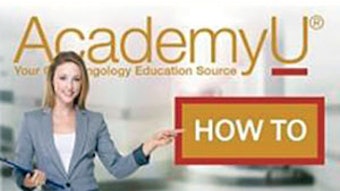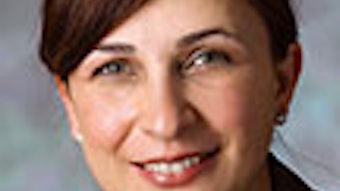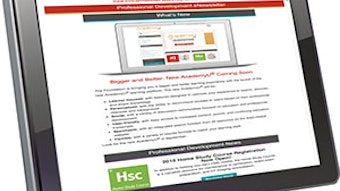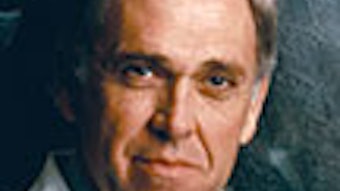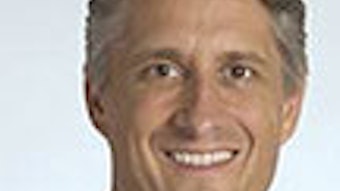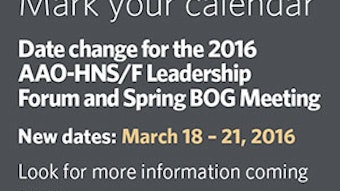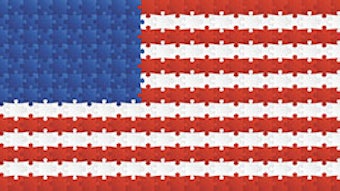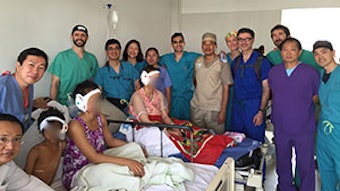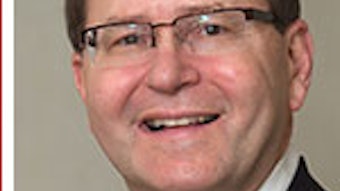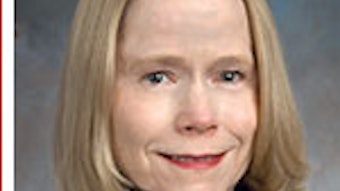Our international journey
In 1995, when I was AAO-HNSF president, I recognized the need for a coherent international program. In 1996 at a Strategic Planning Meeting of the Board of Directors of the American Academy of Otolaryngology—Head and Neck Surgery, a recommendation to create a department of international affairs was endorsed and I was offered the position of coordinator.
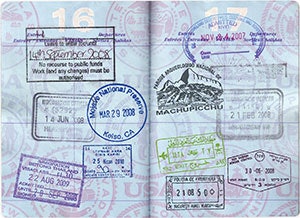
By Eugene N. Myers, MD, FRCS Edin (Hon), University of Pittsburgh Eye and Ear Institute
In 1995, when I was AAO-HNSF president, I recognized the need for a coherent international program. In 1996 at a Strategic Planning Meeting of the Board of Directors of the American Academy of Otolaryngology—Head and Neck Surgery, a recommendation to create a department of international affairs was endorsed and I was offered the position of coordinator. Since international travel and building relationships with international colleagues was a passion of mine and since I was already known as “Dr. International,” it took me only a nanosecond to accept the appointment. The rest is history. I was very excited about embarking on a new adventure, which I knew would be helpful to the AAO-HNSF and our international colleagues.
Over the years there was a small, but loyal, band of colleagues from Mexico and other Latin American countries who attended the Annual Meeting. The Council of the Pan American Association of Otolaryngology met at that time. However, very few North Americans were interested in or even knew about it. Notable exceptions were J. Ryan Chandler, MD, Jarrard W. Goodwin, MD, and I, all of whom eventually served as its president. There was little participation from Europe, Asia, or Africa.
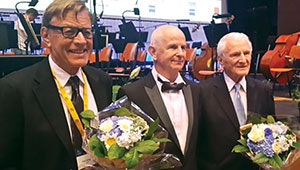 Drs. Klaus Albegger (left), Vienna; Jan Betka (center), president of the European Congress of Otolaryngology-Head and Neck Surgery; and Eugene N. Myers (right), University of Pittsburgh Eye and Ear Institute, were the first recipients of the Medal of Merit from the Confederation of European ORL-HNS.
Drs. Klaus Albegger (left), Vienna; Jan Betka (center), president of the European Congress of Otolaryngology-Head and Neck Surgery; and Eugene N. Myers (right), University of Pittsburgh Eye and Ear Institute, were the first recipients of the Medal of Merit from the Confederation of European ORL-HNS.My goals for this new program were not clearly defined but included providing education and service for our international colleagues that had not been available previously and doing everything possible to make them feel welcome at the Annual Meeting and, of course, make corresponding membership look attractive to them. It was hoped that recruitment of this new Member set would offset declining domestic membership that could occur as a reaction to the newly introduced managed care. This outreach also provided a unique opportunity to tap into a large pool of talented academic leaders, who now do participate in our seminars, panels, and Instruction Courses.
Working with the AAO-HNSF staff, administration, and the BOD we put “creature comfort” at the Annual Meetings as a first priority based on feedback received about these aspects. For example, we recruited many interpreters in multiple languages to prevent bottlenecks at the registration desks, identified less expensive hotels (don’t forget, this was before newer hotel options), and included these hotels on the shuttle bus routes to save taxi expense, and established Instruction Courses in Spanish, the most commonly spoken foreign language at the Annual Meeting.
I had friends who belonged to overseas chapters of the American College of Surgeons, so I investigated the ACS chapters’ structure and made use of what might fit our model. At our Annual Meeting in San Francisco, I invited four friends to a breakfast meeting: Professors William Wei (Hong Kong), Carlos Suares (Spain), Emmanuel Heladonis (Crete), and Chong Sun Kim (Korea). I explained our new program, including overseas components such as chapters, which would have clearly defined goals and benefits. At the end of our meeting I asked if they were in as the original component, it was unanimous!
More important than the name structure, ultimately International Corresponding Society (ICS), were the guidelines for the function of the ICS. For example: the ICS should be the national society of the country (some countries have more than one), a joint meeting with AAO-HNSF should be held every three years (with Turkey and only one with Egypt). I asked each ICS to appoint a member of a newly constructed Otolaryngology–Head and Neck Surgery International Editorial Board and to appoint a nonvoting delegate to the Board of Governors. We also added the very popular Tuesday evening International Reception at the Annual Meeting.
The good news is that we now have nearly 60 Corresponding Societies with more lining up to join, an International Editorial Board and several Joint Meetings in the planning stage. J. Pablo Stolovitzky, MD, did an outstanding job of organizing a webinar, which was enthusiastically received by thousands of colleagues in Mexico and Central and South America. Dr. Stolovitzky is the Regional Advisor to these countries and is one of a cadre of Regional Advisors appointed by Gregory W. Randolph, MD. The programs described above have resulted in a robust increase in the numbers of colleagues attending the Annual Meeting. At the 2014 Annual Meeting in Orlando there were 2,609 attendees from around the world. These individuals made up 46 percent of the attendees at the meeting.
AAO-HNSF staff has been a key component to progress. Catherine Lincoln, with a smile and warmth for all, who worked with me as senior manager of the International program for 17 years, retired last year. We have a very capable successor, Scott Andrews, who has himself had a distinguished career in diplomacy and international relations.
A talented succession of Coordinators of International Affairs has stewarded the program including KJ Lee, MD, Dr. Randolph, and now James E. Saunders, MD. Overall, it has been enormously gratifying to me to have been the “founding coordinator” of International Affairs and to see the major positive impact this program has had for the AAO-HNSF, our international colleagues and their patients, and for me personally.
